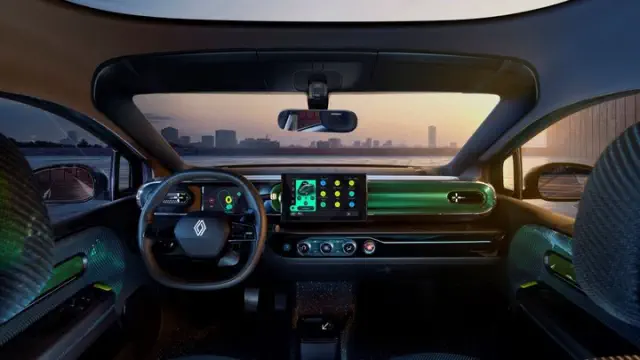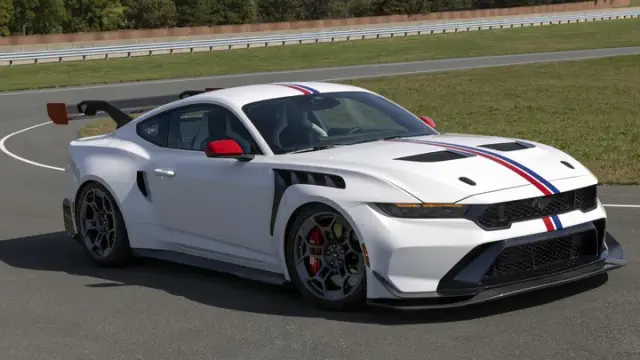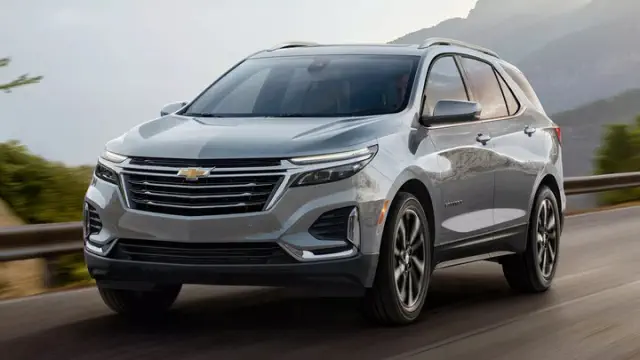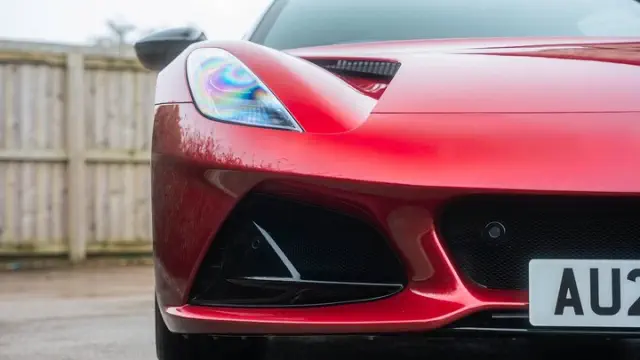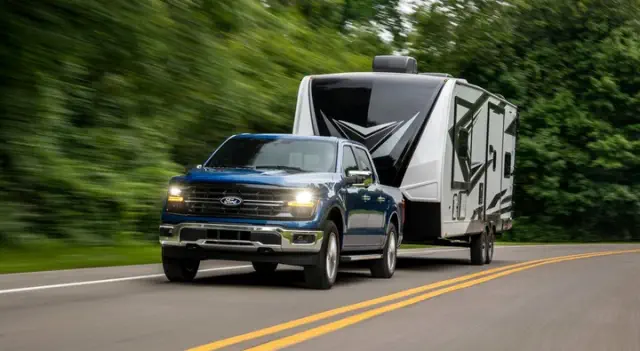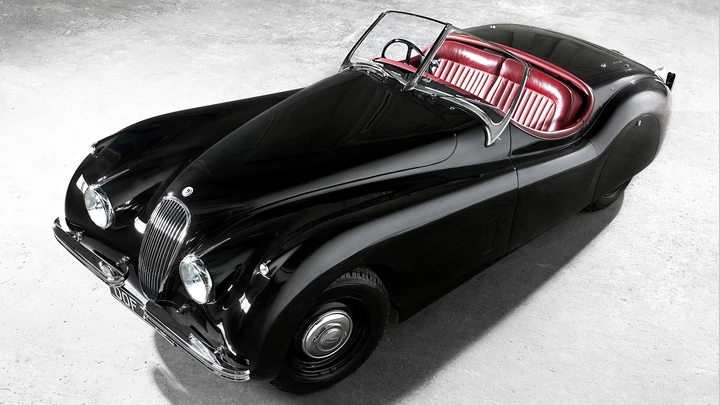
View pictures in App save up to 80% data.
Fast Access Links
In the automotive world, one of the most coveted records that any production car can hold is having the highest top speed. Since the dawn of the automobile, people have been putting cars on extremely long straights and pinning the throttle down until the car can't physically accelerate anymore. It's a simple act, but one of the rawest and most visceral ones a car can perform - delivering its all to reach its top speed.
Jaguar
Jaguar is a premium car manufacturer from the UK, currently owned by the broader Jaguar Land Rover (JLR) group. Originally a producer of motorcycle sidecars from 1922 (under the name Swallow Sidecar Company), the manufacturer later moved to the production of passenger car bodies under the ownership of SS Cars from 1935. In 1945, SS Cars was renamed to Jaguar Cars. The manufacturer has a historic back catalog of vehicles, notably the XK, E-Type, and XJ220, with modern hits including the F-Type and F-Pace. Jaguar has pledged to become an all-electric automaker starting in 2025, with production of all combustion cars ceasing early in 2024. The brand has launched an all-new identity for its future as an electric luxury automaker.
Leaps and bounds of advancements in automotive development have allowed production cars to achieve speeds of nearly 300 mph in recent years, such was the case with the SSC Tuatara, breaking 100 mph was a major issue for production cars just 85 years ago. However, just a few years after the end of World War II, Jaguar introduced their iconic XK120, a two-door model that would not only fundamentally shape the modern sports car as we know it, but would also break the production-car speed record upon its debut.
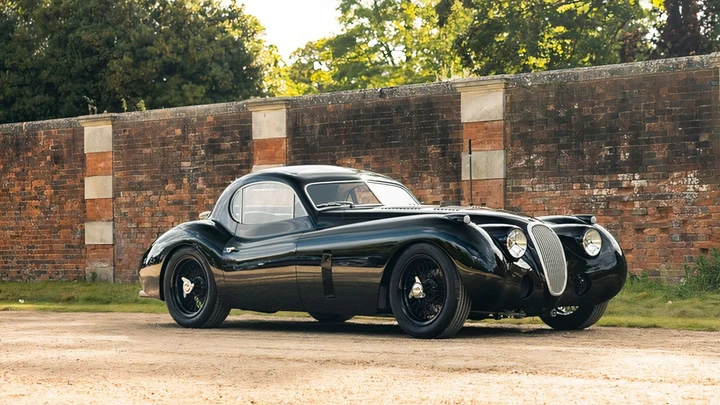
View pictures in App save up to 80% data.
Jaguar XK120 Restomod Brings Hot Rod Vibes with Twice the Power
The timing appears ideal - Jaguar is redefining itself as a more luxury-oriented brand.
The world record for the fastest car we are talking about today pertains to vehicles that are not designed for racing and have not undergone any modifications to their powertrain or drivetrain.
The Jaguar XK120 Was Never Intended for Large-Scale Manufacturing
Jaguar XK120 快速事实
- Achieved a maximum top speed of 124.6 mph in 1949
- Production commenced in 1948
- Featured the first iteration of Jaguar's coveted XK inline-six engine
- Initially produced merely as an engine testbed and show car
Not only did the Jaguar XK120 claim the title of the fastest production car in the world, but it also had an unexpected origin as it was never meant to be produced in large quantities. In 1948, the prototype of the Jaguar XK120 made its debut at the London Motor Show. Initially, it was designed solely as a platform to test Jaguar's new XK inline-six engine. Additionally, the XK120 prototype functioned as a showcase vehicle, illustrating the future design trajectory Jaguar intended to pursue in its automotive creations.

View pictures in App save up to 80% data.
Include CarBuzz in your Google News updates.
Despite Jaguar's initial expectations, the overwhelming public fascination with the XK120 took them by surprise. Consequently, following several discussions and the endorsement of Sir William Lyons, production of the XK120 was swiftly initiated in early 1949. Initially, the XK120 featured a meticulously crafted all-aluminum body, but to streamline costs and assembly time, some body panels were eventually replaced with stamped steel components.
As for its top speed, the first record the XK120 broke was in early 1949 when it was still in its prototype phase. On an empty Belgian highway, the prototype XK120 reached a speed of 132.6 mph with its windshield removed and replaced with just a small aero shield, the sort of tiny windshield you see on vintage racing cars and speedsters. It also boasted a different final-drive ratio than standard, allowing it to reach a higher top speed. Because it was a prototype and not a production model, the 132.6-mph top speed does not count, but it did show the world just how blindingly fast (for the time) the XK120 would be upon its production debut.
The Jag's Historic Record-Breaking Journey
The Jaguar XK120's record-breaking top speed test wasn't undertaken by some high-ranking Jaguar test driver. Instead, the now-defunct English automotive publication called The Motor went ahead with the run. The Jag was taken to the Jabbeke motor road, located within the province of Flanders in Belgium. There, the XK120 was taken up to its 124.6-mph top speed with nothing but its convertible hood erected.
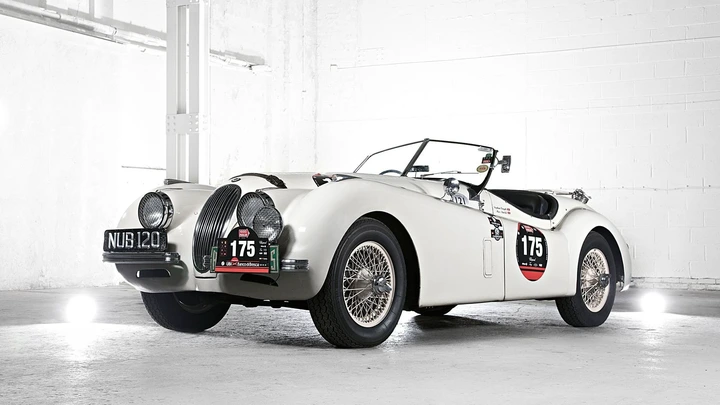
View pictures in App save up to 80% data.
The Motor ended up doing a total of four top-speed passes, two in either direction of the closed motorway. Then, the top speed of each run was added together and divided by four, giving a mean top speed of 124.6 mph. With the top down, the XK120 still managed 122.1 mph, evidently to the surprise of the test driver. Apparently, the Jag's tires needed to be inflated to nearly double the normal pressure in order to survive the top-speed run.

View pictures in App save up to 80% data.
Perspective: The Potential Brilliance Behind Jaguar's Rebranding Efforts
Jaguar is undergoing a rebranding as it transitions to an all-electric lineup. The buzz around it is palpable, but unfortunately, the conversations aren't focused on the positive aspects.
The Motor's official test ended up being the Jaguar XK120's best recorded production top speed until it was beaten by the Mercedes-Benz 300 SL in 1955, which wasn't only very fast, but one of the most beautiful sports cars ever in its own right. However, in October 1953, a heavily modified Jaguar XK120 was able to reach a top speed of 172.41 mph. Driven by Jaguar test driver Normal Dewis, the XK120 received a litany of aerodynamic upgrades, including a bubble canopy, an aluminum undertray, and reduced gearing. The record was again set at the Jabbeke motor road.
The Legendary Heart of the Jaguar XK120
At the outset, as we previously mentioned, the Jaguar XK120 was originally designed to serve as a showcase vehicle and a testing platform for Jaguar's newly developed XK-series inline-six engine. The inaugural version boasted a 3.4-liter engine capacity and introduced several pioneering features, including a cylinder head crafted from a unique aluminum alloy. This particular material, known as RR50, gained recognition for its excellent thermal conductivity and lightweight properties.
The XK-series was equipped with a dual-overhead camshaft setup, incorporating what Jaguar called oversized valves. These larger valves facilitated improved intake and exhaust flow, enabling the engine to generate greater power despite its modest displacement. Additionally, a vibration damper was included, resulting in a notably smoother engine operation compared to many of its contemporaries. The engine block of the XK-series was constructed from cast iron, although the racing versions were outfitted with an aluminum block.
In the following section, we'll explore the specifications of the original XK 3.4-liter inline-six engine that powered the 1949 Jaguar XK120:
Horsepower |
158 hp @ 5,000 rpm |
|---|---|
Torque |
195 lb-ft @ 2,500 rpm |
Bore x Stroke |
3.27 x 4.17 inches |
Compression Ratio |
8.0:1 |
Motor Weight |
574 lbs |
Firing Order |
1-5-3-6-2-4 |
Specific Output |
46.5 bhp / liter |
While 158 horsepower doesn't seem like much these days, especially for a 3.4-liter mill, it was quite a powerhouse back in the '40s. For example, the Oldsmobile Rocket V8 produced just 135 horsepower with a 5.0-liter displacement upon its introduction in 1949. Jag was able to make 23 more horses with over 1.5 fewer liters, largely thanks to its big valves, dual overhead camshafts, and twin SU H6 carburetors.
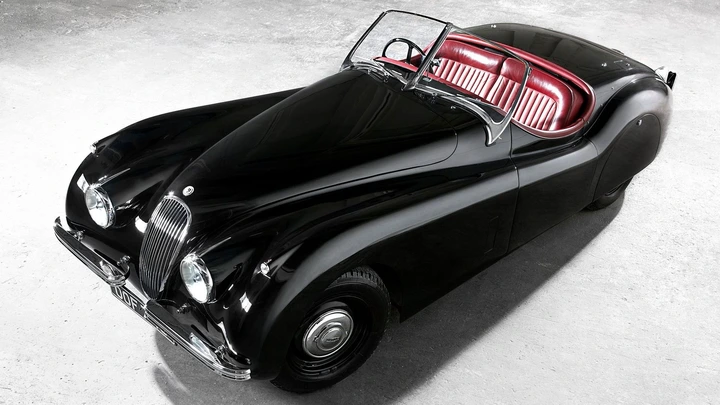
View pictures in App save up to 80% data.
Thanks to its powerful motor, the Jaguar XK120 was able to reach 60 mph from a standstill in just under ten seconds. The Motor also commented on just how smooth the XK120's engine was, even at speed, despite its very long cylinder stroke of nearly 4.2 inches. Not to mention the rest of the car, which, according to The Motor, could be driven by anybody to its top speed without incident or worry. In short, the XK120 was just that smooth and well-behaved. Its brakes were also commended, as Jag used 12-inch Lockheed-sourced drum brakes which, reportedly, took very little pedal pressure to operate.
Another Jaguar That Achieved a Speed Record
Over 40 years later, Jaguar reclaimed the title of "fastest production car in the world". The model to achieve this was the Jaguar XJ220, introduced in 1992 with just a 3.5-liter twin-turbocharged V6. Originally, the XJ220 was to be equipped with a 6.2-liter Jaguar-bred V12 and all-wheel drive. However, when production began, the XJ220 debuted with a twin-turbo 3.5-liter V6 and rear-wheel drive.
On its official top speed run, the XJ220 managed 212.3 mph in a standard state of tune. Three independent witnesses were present for the test, one journalist each from Road and Track and Car Magazine, along with a cameraman from the BBC. Racing legend Martin Brundle was at the wheel, and the test took place at the Italy-based Nardo Ring. Another top-speed run was conducted with the XJ220's catalytic converters removed, and the rev limiter raised to 7,900 rpm. It managed to hit 217.1 mph, but this record was not considered due to these modifications having been done.
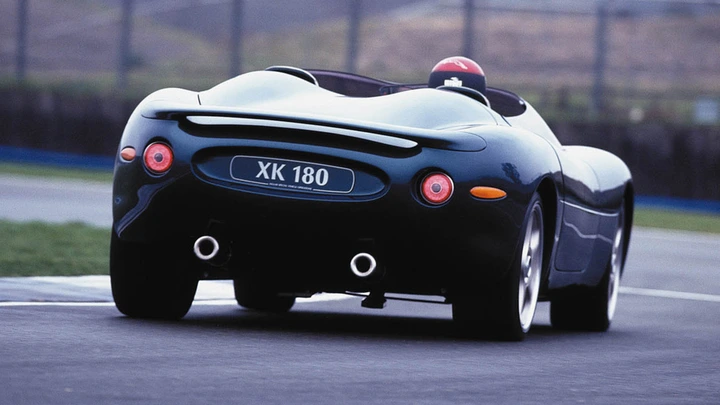
View pictures in App save up to 80% data.
The Jaguar Sports Car Concept That Took 15 Years to Hit the Market
The Jaguar XK series is widely regarded as one of the most esteemed sports cars globally, and during the late 1990s, the brand chose to honor its legacy.
Although some contend that the XJ220's top speed of 212.3 mph is not valid because it was claimed by the manufacturer rather than independently verified—despite the presence of three independent witnesses—the XK120's 1949 record remains uncontested.
Sources: JaguarRules.ru, Jaguar .
